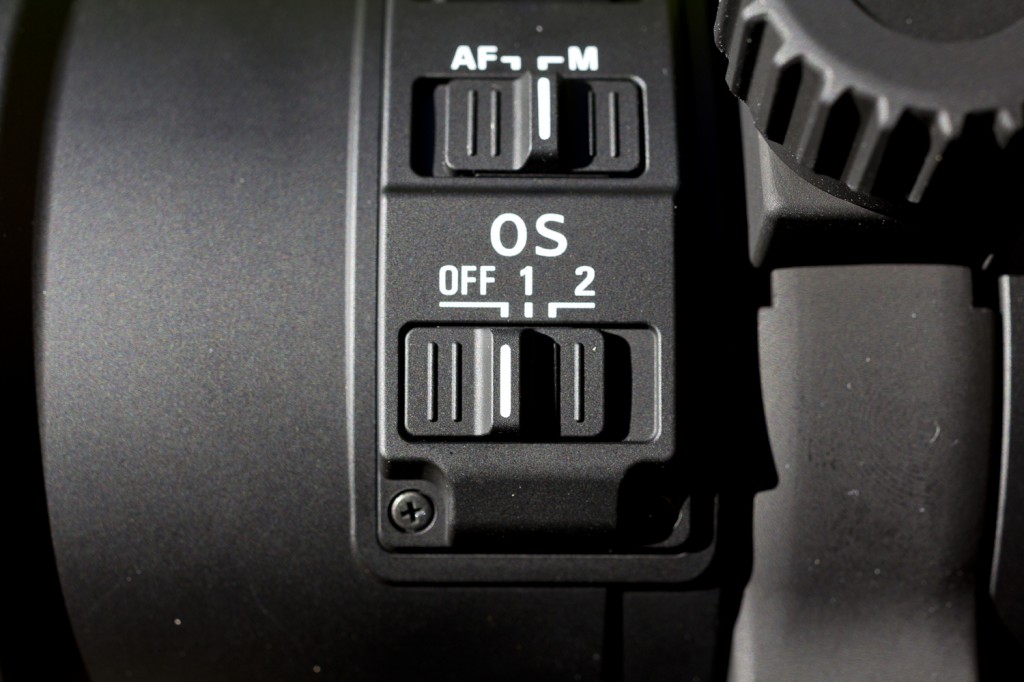Specialized lenses are tricky things. Since they are built for a set of specific purposes in mind, they really need to follow through on that small list of tasks lest they be discarded as an unnecessary expenditure. That is a lot of pressure to make an outstanding lens, so how did Sigma fare with their new 180mm f/2.8 macro? Is it a good addition to your lens collection?
With snappy auto focus and a silent motor, smooth manual focus, great sharpness from f/2.8 through f/22, sturdy build, and no vignetting nor chromatic aberration, this lens hits every mark we are looking for in an excellent telephoto macro lens.

Sigma set out to make the first 180mm macro lens that could open as wide as f/2.8. There are a few variable aperture macro lenses that go as far as 250mm, but they will not open as wide as this Sigma at their longest focal length. Canon and Tamron both make a 180mm macro lens, but it only opens as far as f/3.5. Nikon makes a 200mm lens that can reproduce a ratio of 1:1, but it only opens as far as f/4.0. If the max reproduction ratio of 1:1 with a wide-open aperture of f/2.8 is important to you, then you can’t overlook this lens.
The Sigma feels great. It’s got a nice weight to it and the finish feels of high quality and looks top notch. I personally love the matte black finish- it looks clean and somewhat intimidating. Scares all those other lenses back into the camera bag. The focus ring is extremely wide and easy to use. Like any large telephoto should, it comes with an optional tripod collar so that you can rest the fulcrum on the full weight of the lens/camera combo in a place that won’t put unnecessary stress on the camera-to-lens connection point. One thing that both Sigma and Tamron do with their 180mm lenses that Canon does not is place lines on both the lens and the collar so that if you choose to move between landscape and portrait orientation, it's easy to get a level horizon. Not sure why Canon's lens lacks this great feature.

This lens has a minimum focus distance of 18.5 inches (46.99 cm), which might not seem all that close at first glance. Think about it though, it’s a 180mm lens. I don’t think you need to be much closer than that. At no point while shooting with this lens did I ever think, “I wish I could lean in closer.” Often, I found myself backing up.


The lens comes with two stages of OS (optical stabilization). OS 1 is for situations where you might tilt up and down, while OS 2 is for panning (moving side to side). I’ve been told that if you have a tripod, you don’t need either OS, but I have not noticed a problem when left on except you can hear the OS running (which I find reassuring actually).
Like every lens I test, I took this sucker out to my local brick wall and photographed the same area at every aperture from f/2.8 through f/22. I found a fantastically consistent sharpness. Yes, it has it’s strong points, like any lens would, at around f/7.1 – f/9. However, unlike other lenses that can struggle past f/11, the Sigma remains quite sharp until just slightly blurring at f/18. That does not change much by the time I got up to f/22, and the sharpness is well within the acceptable range. Below, you can see samples from my shoot. From left to right, top to bottom, f/2.8, 5.6, 10, 16, and 22:


Especially with this lens, I can’t imagine shooting at f/22, but if you ever do find yourself that closed down, you won’t have to worry about your image quality.
The 180mm Sigma is nicely sharp at f/2.8, which is where it really needs to be since shallow depth of field is where we want this lens to shine.
I have heard murmurs that this lens can have trouble with chromatic aberration the further you close it down, but I could not reproduce this problem. I tested this lens against various objects and light situations to get different contrast edges to try and get colors to fringe at those contrast points, but I was unable to get any chromatic aberration to show itself. So as far as I am concerned, this lens has no problems with chromatic aberration.
When testing, I didn’t just want to keep this beautiful beast of a lens in the studio. I wanted to take it into the real world, lug it around, and see how it performed in various light and environmental situations. To do so, I packed it up and took it to the flower conservatory in Golden Gate Park, San Francisco. I happened to select a particularly overcast day (San Francisco? Overcast? Who would have thought?), so inside the conservatory, the light wasn’t particularly strong. In the darker corners of the room (where I was shooting above ISO 3200 even wide open), the lens struggled a bit discerning a focus subject. I would fight with the AF for the better part of 30 seconds before it got to where I wanted it, which wasn’t the best experience. However, I’m not saying my experience with any other auto focus on any other lens would be much better. When you are shooting at such a long focal length into a dense, forested area, there are a plethora of objects and shapes that could be construed as the subject. Add darkness to that equation, and I’m impressed the lens found a subject at all. In only one case was I unable to focus on a flower, and that was mostly because the petals were about a millimeter thick and it was dark. Not the lens’ fault.
Test shots:





What was most admirable about the auto focus is that it rarely found the need to focus all the way in, then all the way out, then back in to where it was close to being sharp. When lenses do that, it irritates me to no end. Luckily, the lens is high enough quality to hover around the focus point and find it without shooting around willy nilly through the whole focus range of the lens. Anger and frustration curtailed.
The next day in broad daylight, I tested the auto focus again and it was snappy, accurate, and silent. Perfect.
The manual focus is smooth quiet, and very precise. These are all features that matter in a lens, and the Sigma nails every one.
In all my tests, there was absolutely zero vignetting at any aperture- yet another plus. If I want a vignette, I can add it in post.
What I like:
- Fast, quiet, responsive auto focus
- Super sharp across all apertures
- Shows gorgeous detail
- Has a sturdy and well-built feel
- Opens wide to f/2.8
What I dislike:
- At 3.5 pounds, it’s pretty heavy (Boo hoo. I’ll get over it. )
- It can struggle with auto focus in low light situations
Should you buy it?
This lens is not for everyone. Its price point can be rather prohibitive to a lot of photographers at $1700. And to that end, not all of us need a lens that can do what this lens does. Heck, I don’t NEED this lens, but I sure as heck love having it. If you’ve been looking for a great telephoto and want 1:1 magnification reproduction with a minimum focus distance of under a foot and a half, yes absolutely buy this lens. Buy it right now- you won’t be disappointed. You get more than what you pay for. The quality of this lens is well worth the $1700.
I love this lens. It can help me create some stunningly beautiful wildlife photos, which is exactly what a lens like this is designed to handle. When shooting with the Sigma 180mm f/2.8 macro, I was not thinking about the lens, but about my subjects. That is the core difference between a lens I love, and a lens I loathe. I want to be free to focus on what matters, instead of getting hung up on the limitations of my hardware. This Sigma frees me.
The Sigma 180mm f/2.8 APO Macro EX DG OS HSM lens is available now for Canon, Nikon, Sony, Pentax and Sigma DSLRs mounts for $1700.















heck! i think this is exactly the lens i actually need!! The only turn off i see on it is the lack of an aperture ring, i would be able to use it on my DSLR but wont be able to properly use it on my film SLRs, and i still do a lot of film photography... sigh...
Yeah, an aperture ring would be sweet, but that's not common on any new lens these days. They aren't planning for film, sadly.
Sorry but this sounds like a commercial more than a review.
So every positive review is an ad, and every negative review is evidence that the author doesn't know the difference between instagram and unsharp mask?
Can't we all just agree that Jaron is paid by Nikon?
Why would Nikon pay Jaron to review a Sigma lens?
"Especially with this lens, I can’t imagine shooting at f/22, but if you ever do find yourself that closed down, you won’t have to worry about your image quality."
Really? Macro subjects result in extremely shallow depth of field. You can't imagine needing to stop down all the way with a *macro* lens?
I don't know about you, but when I shoot macro (as I did above) shallow DOF is exactly what I want.
??? 180mm 2.8 using macro depth of field of hair?
What type of macro do you work?
You may want to use extreme (and with macro it is very extreme) shallow DOF for artistic purposes. However, this is meant to be a lens review, not a discussion of your very personal preferences and style.
I never go past f/16 when shooting at 1:1. Stack focus if you need that much DOF.
Fair point. In controlled conditions that will almost certainly produce a better result. However asking that hovering bee to hold still for 6 consecutive shots, at different settings, isn't always an option.
The version for Pentax camera has never been produced.
i had this lens on my d800 sold it now i have 150mm 2.8 os hsm and it have bean on repair twise the focusmotor was caputt and the secondtime terribel noices when os is activated it is for sale im missing my Nikon quallity 105 2.8 vr lens
This is NOT the "first 180mm macro lens that could open as wide as f/2.8". Sigma made an 180/2.8APO Macro (together with an 180/5.6APO Macro) in both MF & AF versions many years ago.
From left to right, top to bottom, f/2.8, 5.6, 10, 16, and 22?
There are only 3 images and no left to right ones.
When I use stabilization on the older canon eos film bodies, the OS unit makes rapid clicking noises and shuts off camera. I am referring to the reviewed lens by the way.The OS unit works fine with canon eos 5ds with no issues. Can you explain why this is happening?